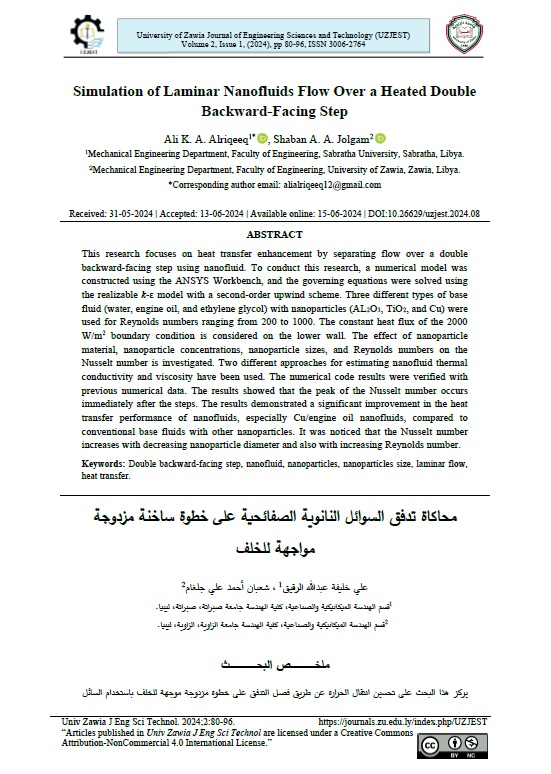Simulation of Laminar Nanofluids Flow over a Heated Double Backward-Facing Step
Main Article Content
Abstract
This research focuses on heat transfer enhancement by separating flow over a double backward-facing step using nanofluid. To conduct this research, a numerical model was constructed using the ANSYS Workbench, and the governing equations were solved using the realizable k-ε model with a second-order upwind scheme. Three different types of base fluid (water, engine oil, and ethylene glycol) with nanoparticles (AL2O3, TiO2, and Cu) were used for Reynolds numbers ranging from 200 to 1000. The constant heat flux of the 2000 W/m2 boundary condition is considered on the lower wall. The effect of nanoparticle material, nanoparticle concentrations, nanoparticle sizes, and Reynolds numbers on the Nusselt number is investigated. Two different approaches for estimating nanofluid thermal conductivity and viscosity have been used. The numerical code results were verified with previous numerical data. The results showed that the peak of the Nusselt number occurs immediately after the steps. The results demonstrated a significant improvement in the heat transfer performance of nanofluids, especially Cu/engine oil nanofluids, compared to conventional base fluids with other nanoparticles. It was noticed that the Nusselt number increases with decreasing nanoparticle diameter and also with increasing Reynolds number.

